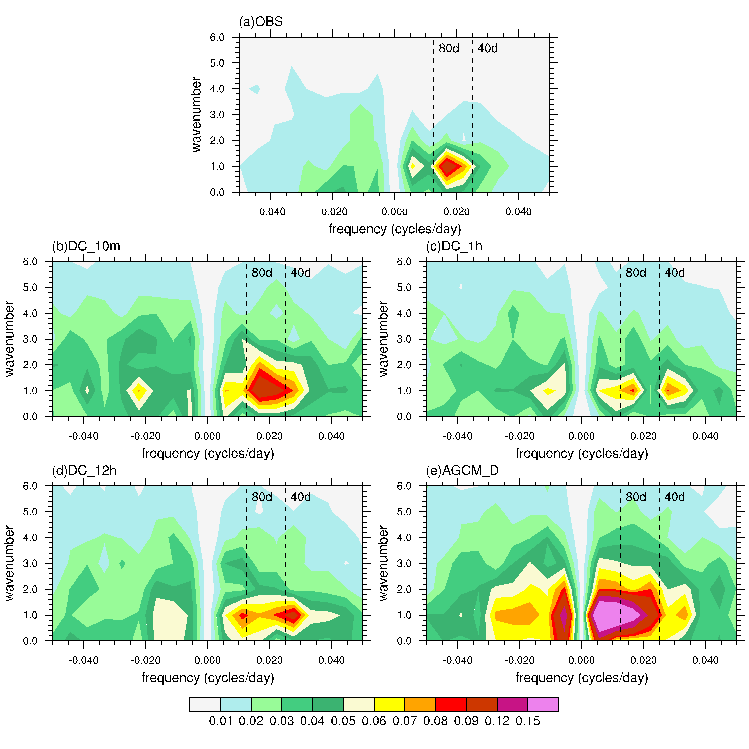Impact of Subdaily Air-Sea interaction on Simulating Intraseasonal Oscillations over the Tropical Asian Monsoon Region
Date:2015-02-12
The off-equatorial boreal summer intraseasonal oscillation (ISO) is closely linked to the onset, active, and break phases of the tropical Asian monsoon, but the accurate simulation of the eastward-propagating low-frequency ISO by current models remains a challenge. Since the diurnal cycle of precipitation and cloud directly influences radiative heating and surface fluxes and then further affects the subseasonal variability, introducing the processes of air-sea exchange in the coupled model will greatly improve the capacity of simulating the eastward-propagating component of ISO.
HU Wenting, DUAN Anmin and WU Guoxiong from the Institute of Atmospheric Physics (IAP) use an atmospheic general circulation model (AGCM)-ocean mixed layer coupled model with high (10min) coupling frequency (DC_10m), which shows improved skill in simulating the ISO signal in terms of period, intensity, and propagation direction (Fig.1), compared with the coupled runs with low (1- and 12-hr) coupling frequency and a stand-alone AGCM driven by the daily sea surface temperature (SST) fields. In particular, only the DC_10m is able to recreate the observed lead–lag phase relationship between SST (SST tendency) and precipitation at intraseasonal timescales, indicating that the ISO signal is closely linked to the sub-daily air–sea interaction. During the ISO life cycle, air–sea interaction reduces the SST underlying the convection via wind–evaporation and cloud–radiation feedbacks, as well as wind-induced oceanic mixing, which in turn restrains convection. However, to the east of the convection, the heat-induced atmospheric Gill-type response leads to downward motion and a reduced surface westerly background flow due to the easterly anomalies. The resultant decreased oceanic mixing, together with the increased shortwave flux, tends to warm the SST and subsequently trigger convection. Therefore, the eastward propagating ISO may result from an asymmetric east–west change in SST induced mainly by multi-scale air–sea interactions.
The paper has been published in Journal of Climate in 2015.

Fig.1 May–October averaged wavenumber–frequency spectra of 850-hPa zonal wind anomalies averaged over 10°–20°N derived from 27 years of (a) ERAI, (b) DC_10m, (c) DC_1h, (d) DC_12h, and (e) AGCM_D. Units: m2 s–2 per frequency interval per wavenumber interval.
Citation: Wenting Hu, Anmin Duan, and Guoxiong Wu, 2015: Impact of Subdaily Air–Sea Interaction on Simulating Intraseasonal Oscillations over the Tropical Asian Monsoon Region. J. Climate, 28, 1057–1073.
Download: http://journals.ametsoc.org/doi/abs/10.1175/JCLI-D-14-00407.1
Contact: Dr. HU Wenting,hwt@lasg.iap.ac.cn
